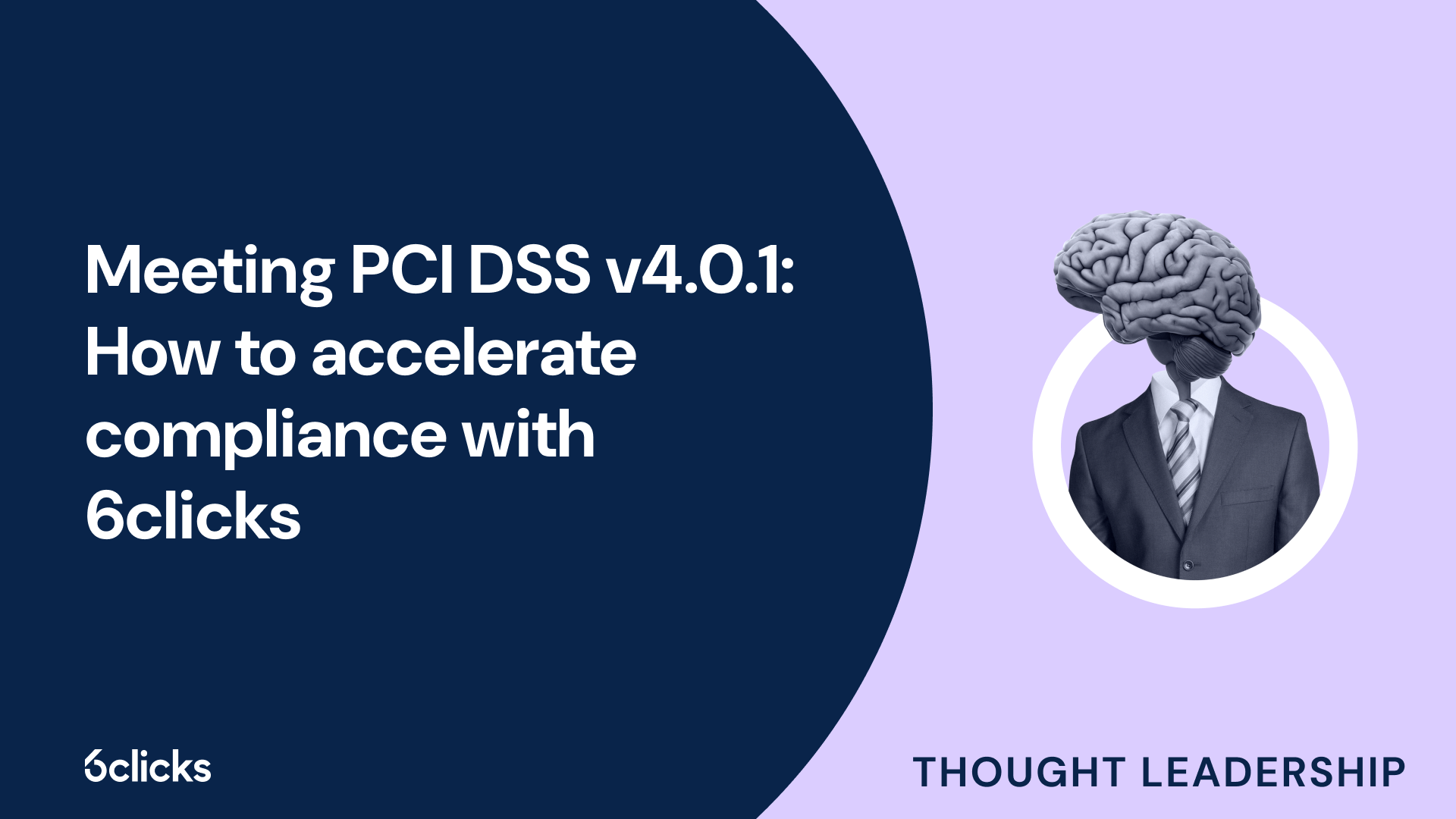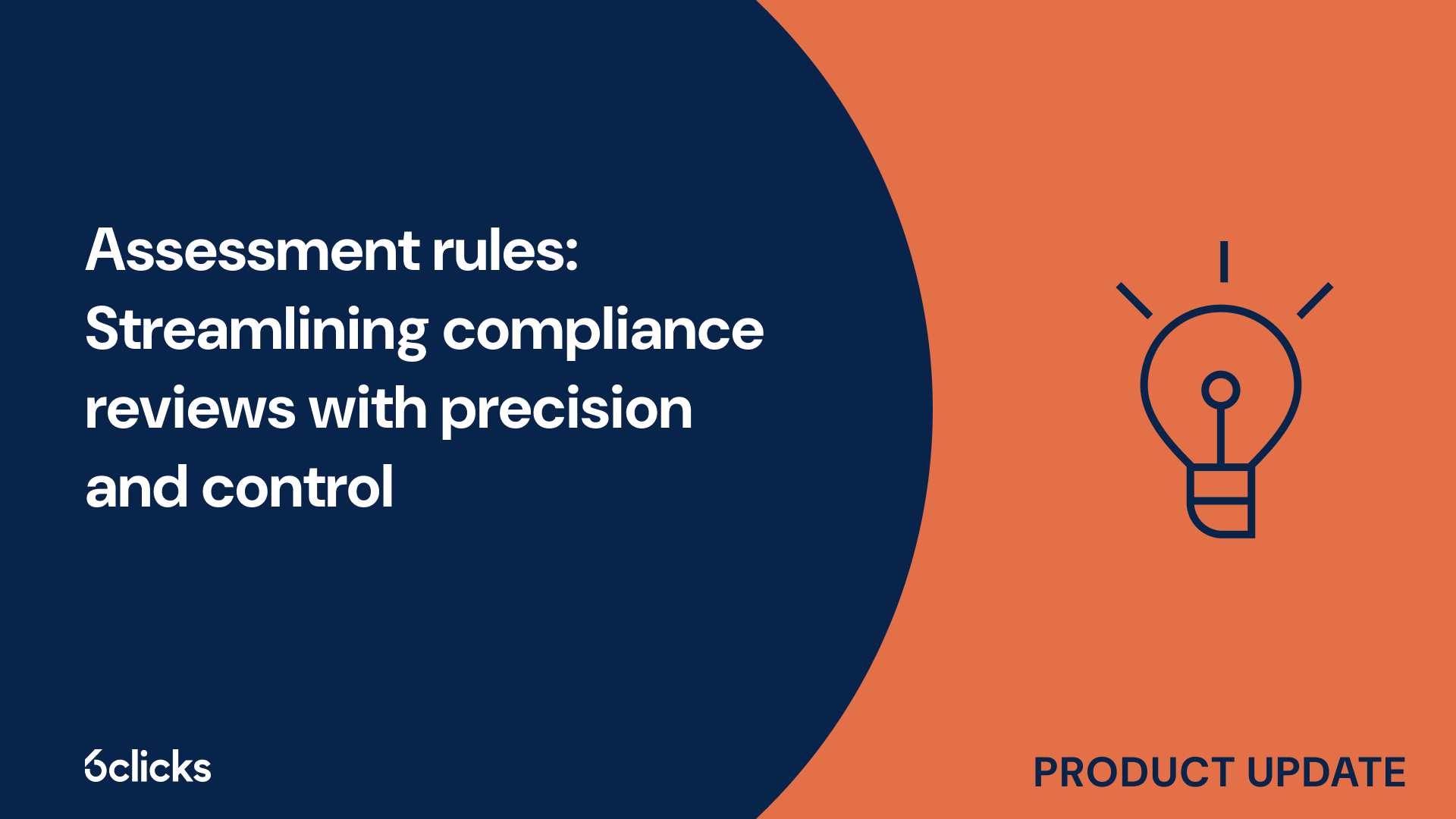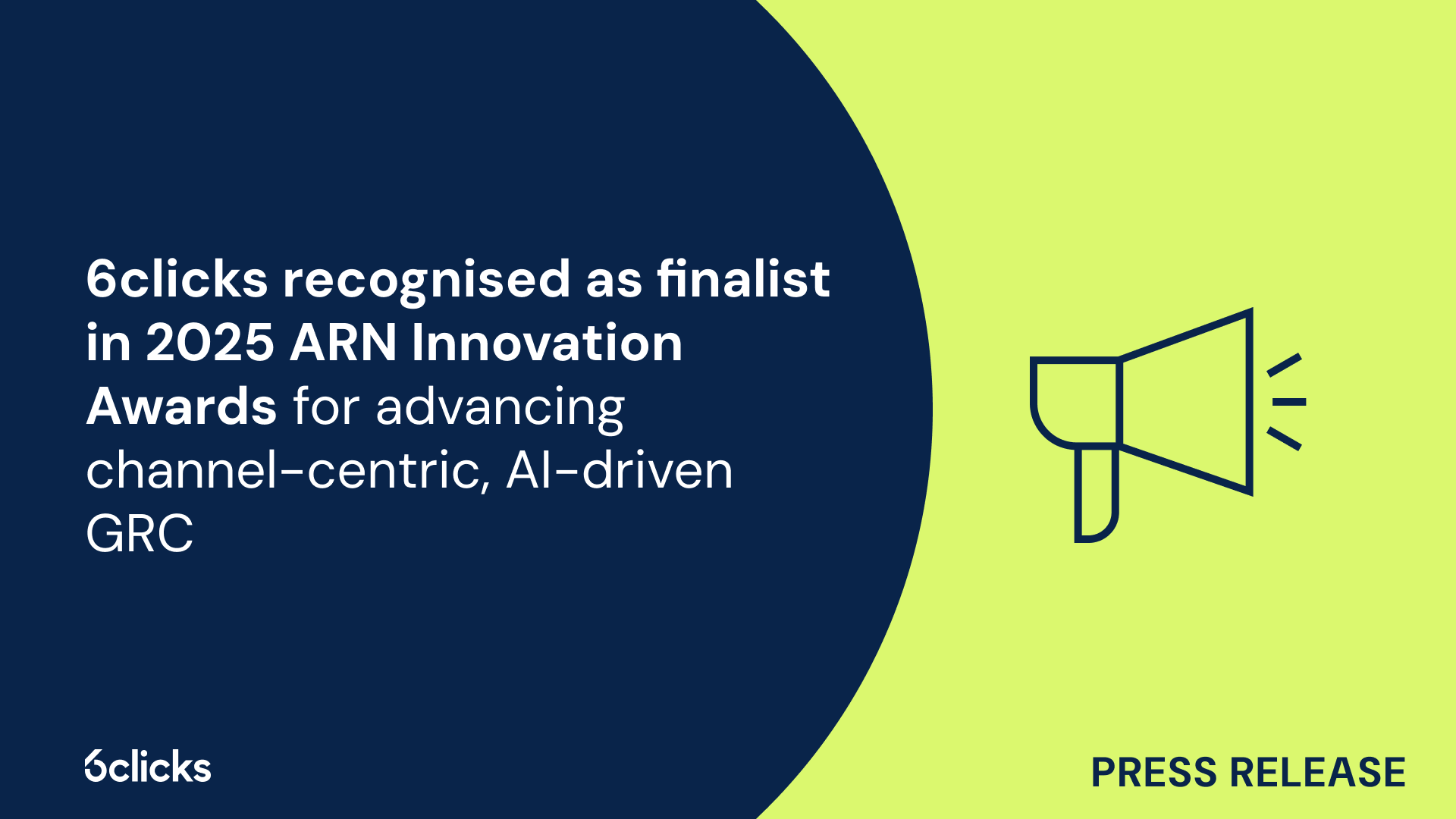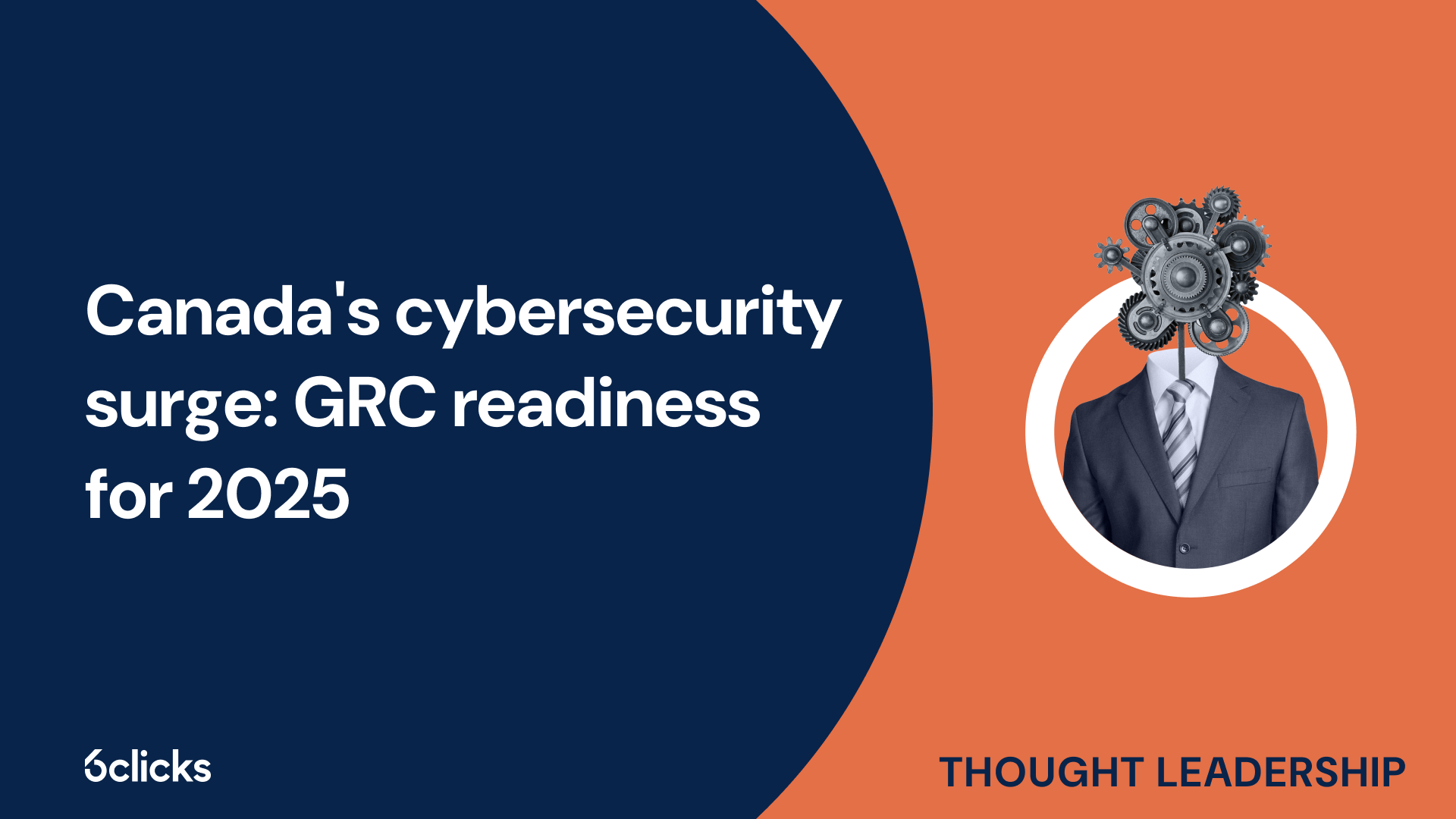The GRC buyer’s guide for 2025: Building resilience with AI-powered, federated solutions
Discover the ultimate GRC buyer's guide for 2025! Uncover how AI-powered, federated solutions transform compliance and security management for industries like government, aerospace, banking, and more. Learn about centralized control, continuous compliance, and advanced cyber GRC capabilities. Download now!
-1.png?width=200&height=249&name=Group%20193%20(1)-1.png)
The GRC buyer’s guide for 2025: Building resilience with AI-powered, federated solutions
Definition of GRC
GRC, which stands for Governance, Risk, and Compliance, is a structured approach that businesses adopt to effectively manage their regulatory requirements, business objectives, and principled performance. It encompasses the integration of various functions such as enterprise risk management, compliance management, internal audit, and government regulation adherence into a cohesive strategy. The goal of GRC is to ensure that the organization operates within legal and ethical boundaries, manages potential risks efficiently, and aligns its actions with the overall business strategy. By adopting a holistic approach to GRC, businesses can enhance their risk management strategies, improve their business performance, and reduce unnecessary costs. GRC provides a source of truth and visibility into risks across different business units, breaking the silo mentality that may lead to duplication of efforts and inefficient use of resources. Through a well-planned GRC strategy, businesses can achieve effective governance, maintain regulatory compliance, and proactively manage potential risk, ultimately enhancing their overall business continuity and financial stability.
Goals of GRC
The goal of GRC (Governance, Risk, and Compliance) in a business is to provide a structured approach to managing risks, meeting regulatory requirements, and ensuring compliance while enhancing principled performance and achieving business objectives.
Firstly, GRC helps businesses align their activities with their overall goals and objectives. By integrating risk management, compliance, and governance activities, GRC ensures that all departments and business units work towards common objectives, reducing duplication of effort and creating a unified approach to achieving targets.
Secondly, GRC ensures that businesses operate in accordance with regulatory requirements. It helps organizations keep up to date with changing regulations and implement necessary measures to comply with them. This reduces the risk of non-compliance, potential penalties, and reputational damage.
Furthermore, GRC enhances principled performance by promoting ethical conduct and responsible business practices. It provides guidance on ethical behavior, fosters transparency, and facilitates the identification and management of potential risks that might impact the organization's reputation and social responsibility.
Lastly, GRC provides a structured approach to managing risks across the organization. By centralizing risk management activities, businesses gain visibility into risks, enabling them to make informed decisions and develop effective risk management strategies. This holistic approach to risk management reduces vulnerabilities and enhances the resilience of the organization.
Business objectives
Business objectives are the clear and measurable goals that organizations strive to achieve. They define the direction and purpose of a business, outlining what it wants to accomplish in terms of growth, profitability, customer satisfaction, and market share. In the context of GRC, the goal is to align all risk management, compliance, and governance activities with these broader business objectives. By integrating these functions, businesses can work towards common goals, eliminate duplication of effort, and create a unified approach to achieving targets. This ensures that every department and business unit contributes to the overall success of the organization, while also reducing the risk of non-compliance, reputational damage, and potential penalties. In short, GRC helps businesses stay focused and on track towards achieving their business objectives.
Regulatory requirements
Regulatory requirements play a crucial role in governing various aspects of business operations. Businesses are often subject to specific regulations that they must comply with in order to operate legally and ethically. Examples of these regulations include the General Data Protection Regulation (GDPR), the Health Insurance Portability and Accountability Act (HIPAA), the Sarbanes-Oxley Act (SOX), and the Gramm-Leach-Bliley Act (GLBA).
The GDPR focuses on data protection and privacy for individuals within the European Union. It requires businesses to have measures in place to protect personal data, obtain consent for data processing, and ensure lawful transfer of data.
HIPAA aims to safeguard protected health information (PHI) in the healthcare industry. It establishes standards for handling PHI, ensuring its confidentiality, integrity, and availability, and protecting patients' rights.
SOX focuses on financial reporting and disclosure requirements for publicly traded companies in the United States. It establishes regulations to prevent financial fraud, enhance transparency, and improve corporate governance.
GLBA regulates the financial industry and aims to protect consumers' personal financial information. It requires financial institutions to implement privacy and security measures to protect customer information.
Complying with these regulatory requirements is essential for businesses to ensure legal and ethical operations while protecting customer data, maintaining financial accuracy, and safeguarding consumer privacy. By adhering to these regulations, businesses can build trust with their customers, avoid legal penalties, and foster a positive reputation in the marketplace.
Principled performance
Principled performance is a concept within the context of Governance, Risk, and Compliance (GRC) that emphasizes the role of ethical conduct and acting with integrity in achieving business objectives. It recognizes that organizations face various uncertainties, and effective GRC practices are essential in managing these uncertainties while maintaining ethical standards.
One framework that enables organizations to improve their GRC capabilities and achieve principled performance is the GRC Capability ModelTM developed by OCEG (Open Compliance and Ethics Group). This model integrates various disciplines of GRC, including governance, risk management, internal control, and compliance. It provides organizations with a structured approach to assess, design, and improve their GRC capabilities across different functions and levels.
Maturing GRC and integrating governance, risk, and compliance practices are crucial in achieving principled performance. By aligning GRC efforts with business objectives and ensuring transparency and accountability, organizations can address potential risks, comply with regulatory requirements, and make informed decisions. This holistic approach to GRC helps organizations avoid duplication of effort, improve operational efficiency, and reduce unnecessary spending.
Structured approach
Adopting a structured approach in implementing GRC is essential for organizations to effectively manage their governance, risk, and compliance practices. This approach involves a phased implementation, where each phase is treated as a separate project, ultimately leading to the integration of GRC over time.
One of the key reasons for adopting a structured approach is to prioritize weaknesses within the organization's GRC capabilities. By involving key stakeholders from various functions and levels, organizations can gain valuable insights and identify the areas that require immediate attention. This ensures that efforts are focused on addressing the most critical risks and compliance requirements, thereby reducing the chances of any potential compliance violations or financial risks.
Treating each phase as a separate project also offers several benefits. It allows organizations to break down the complex process of implementing GRC into manageable tasks, making it easier to allocate resources and track progress. Additionally, by focusing on one phase at a time, organizations can better allocate their time, effort, and budget to ensure successful outcomes.
Furthermore, a phased approach enables organizations to build a strong foundation for GRC implementation. By implementing GRC in stages, organizations can gradually develop the necessary infrastructure, policies, controls, and technologies. This ensures a more seamless integration and reduces the risk of disruptions to business processes.
Ultimately, the goal of adopting a structured approach in GRC implementation is to integrate governance, risk management, and compliance practices across the organization over time. This holistic approach not only helps organizations effectively manage potential risks and comply with regulatory requirements but also promotes transparency, accountability, and principled performance. By prioritizing weaknesses, involving key stakeholders, and treating each phase as a separate project, organizations can ensure a successful and well-planned GRC strategy.
Enterprise risk management
Enterprise risk management (ERM) is a critical component of a comprehensive governance, risk management, and compliance (GRC) strategy. The goal of ERM is to proactively identify, assess, and mitigate risks that could impact an organization's objectives and goals. By taking a holistic approach to risk management, ERM enables businesses to anticipate potential risks, develop effective strategies to mitigate them, and improve overall business performance. With ERM, organizations can gain a comprehensive understanding of their risks and implement strategies to minimize potential losses, protect their reputation, and ensure business continuity. By integrating ERM into their GRC framework, businesses can ensure a structured and systematic approach to managing all types of risks they face.
Identifying risks
Identifying risks is a crucial step in establishing effective risk management strategies for businesses. By analyzing the different types of risks that a business may face, such as performance risk, compliance risk, IT risk, financial risk, and reputational risk, organizations can proactively address potential threats and develop strategies to mitigate them.
Performance risk involves identifying factors that may hinder a business from achieving its objectives and targets. This may include operational inefficiencies, market changes, or inadequate resource allocation. Compliance risks focus on ensuring adherence to laws, regulations, and industry standards. Non-compliance can result in legal penalties, reputation damage, and financial losses.
IT risks encompass threats to a business's technological infrastructure, information security, and data privacy. Financial risks involve the potential for financial loss due to factors such as market volatility, credit risks, or inadequate financial controls. Reputational risks relate to threats to a company's image, brand, or goodwill, which can result from negative press, customer complaints, or unethical behavior.
Risk management programs and enterprise risk management (ERM) strategies play a crucial role in detecting and assessing risks. These programs involve establishing processes, systems, and controls to identify, analyze, evaluate, and monitor risks. By implementing risk management frameworks, businesses can proactively assess threats and develop mitigation strategies to minimize the impact of potential risks.
To establish objectives in line with values and risks, organizations must consider the three key elements of people, processes, and technology. This holistic approach ensures that the right individuals with the necessary skills and expertise are involved in risk management activities. It also encompasses well-defined processes and policies that enable the systematic identification and assessment of risks. Finally, technology solutions can provide visibility into risks, facilitate data analysis, and support decision-making.
Analyzing risks
Analyzing risks in the context of Governance, Risk, and Compliance (GRC) involves a comprehensive evaluation of various categories of business risks and the implementation of proactive risk monitoring and management strategies. These include performance or operational risk, compliance risk, IT risk, financial risk, and reputational risk.
Performance or operational risk pertains to factors that may impede a business from achieving its objectives, such as inefficiencies in business processes or resource allocation. Compliance risk is focused on ensuring adherence to laws, regulations, and industry standards to avoid legal penalties, reputation damage, and financial losses. IT risk encompasses threats to a company's technological infrastructure, information security, and data privacy. Financial risk involves the potential for financial loss due to market volatility, credit risks, or inadequate financial controls. Lastly, reputational risk relates to threats to a company's image, brand, or goodwill.
The process of risk analysis helps identify potential threats and vulnerabilities within an organization. It involves systematically assessing and evaluating these risks to determine their potential impact and likelihood. By analyzing risks, businesses can prioritize their mitigation efforts, allocate resources effectively, and develop proactive strategies to minimize the impact of potential risks.
Monitoring and mitigating risks
In the context of Governance, Risk, and Compliance (GRC), monitoring and mitigating risks is a crucial aspect of ensuring the overall success and sustainability of a business.
The process of monitoring risks involves actively identifying, tracking, and assessing potential risks that could impact the achievement of business objectives. This includes regularly reviewing key performance indicators, conducting risk assessments, and monitoring regulatory requirements and compliance activities.
Once risks are identified, organizations must implement strategies to mitigate them effectively. This involves developing controls and procedures to minimize the impact and likelihood of risks occurring. It may include implementing internal controls, security measures, and risk management techniques such as transferring, accepting, or avoiding risks.
It is essential for organizations to actively monitor potential risks to stay ahead of emerging threats and ensure timely mitigation. By doing so, they can identify vulnerabilities and take proactive measures to prevent or minimize the impact of potential risks.
Furthermore, organizations need to dedicate resources to identify and analyzing risks. This allows them to prioritize their mitigation efforts appropriately and allocate resources effectively. By establishing controls, companies minimize the likelihood and impact of risks, ensuring a structured and resilient approach to managing potential threats.
Business goals
The goal of Governance, Risk, and Compliance (GRC) in a business is to align the organization's activities with its overall business objectives. GRC ensures that all business operations are conducted in a manner that is compliant with regulatory requirements and principled performance. By implementing a structured approach to GRC, business units can effectively manage enterprise risks, comply with government regulations, and achieve their business strategy. GRC helps organizations identify potential risks and implement risk management strategies to protect the business and its key stakeholders. It provides visibility into risks, improves business performance, and helps in identifying cost-saving opportunities. With a well-planned GRC strategy, organizations can streamline their compliance activities, eliminate duplication of effort, and reduce unnecessary spending. By taking a holistic approach to GRC, businesses can effectively manage and mitigate potential risks, ensuring the long-term success and continuity of their operations.
Compliance requirements
Compliance requirements are an important aspect of the governance, risk management, and compliance (GRC) framework in business. These requirements refer to the industry-specific regulations and laws that organizations must adhere to in order to ensure legal and ethical practices. In today's business climate, there are numerous compliance requirements that businesses need to consider.
One such compliance requirement is the General Data Protection Regulation (GDPR) for organizations that handle personal data of European Union citizens. This regulation sets guidelines for data protection, privacy rights, and consent requirements. Similarly, the Data Protection Act ensures proper handling and safeguarding of personal information in the UK.
Health and Safety Compliance is another key requirement that businesses must adhere to, regardless of the industry they operate in. This includes regulations that ensure the well-being of employees, such as providing a safe working environment, implementing safety protocols, and conducting regular audits.
Financial services organizations also face compliance requirements from regulatory bodies such as the Financial Conduct Authority. These regulations are meant to ensure fair practices, prevent financial crimes, and protect consumer interests.
Continuing regulatory change is a constant challenge for compliance officers. The ever-evolving nature of compliance requirements makes it difficult for businesses to stay updated and compliant. This is where a well-planned GRC strategy can help. By implementing a structured approach to compliance management, businesses can track regulatory changes, assess their impact, and take the necessary steps to ensure compliance. GRC provides a holistic approach that enables organizations to identify potential risks and implement effective risk management strategies to avoid compliance issues.
Internal audit
Internal audit plays a crucial role in the overall governance, risk management, and compliance (GRC) strategy of a business. It is responsible for evaluating and monitoring the effectiveness of an organization's internal controls, risk management processes, and compliance with laws and regulations.
One of the key responsibilities of internal audit is conducting risk assessments. By identifying and assessing potential risks, internal auditors can help the organization understand its exposure to various threats and develop mitigation strategies to address them. This proactive approach allows businesses to prevent compliance violations, financial fraud, and other risk-related issues.
Another important task of internal audit is audit planning. This involves determining the scope and objectives of the audit, developing an audit plan, and allocating resources accordingly. By carefully planning the audit process, internal auditors can ensure that all relevant areas are covered and that the audit is conducted efficiently.
During the audit execution phase, internal auditors collect and analyze evidence to determine whether controls are operating effectively and whether there are any compliance gaps or weaknesses. They also assess the efficiency and effectiveness of business processes and recommend improvements where necessary.
After completing the audit, internal auditors analyze their findings and prepare detailed reports that summarize the results. These reports provide management with valuable insights and recommendations to enhance controls, mitigate risks, and improve compliance.
Having an effective internal audit process in place can help streamline financial controls and reduce time and costs. By identifying control weaknesses and gaps in a timely manner, businesses can address them before they escalate into major issues. This can result in cost savings by preventing potential financial losses, regulatory fines, and reputational damage.
Government regulations and regulatory compliance
Government regulations and regulatory compliance play a crucial role in the goal of GRC (Governance, Risk, and Compliance) in a business. Companies are required to adhere to various government regulations to ensure ethical and legal practices.
For example, in the United Kingdom and European Union, the General Data Protection Regulation (GDPR) and the Data Protection Act set guidelines for the processing and protection of personal data. Compliance with these regulations is essential to safeguard customer privacy and to avoid potential fines and penalties.
Additionally, the Freedom of Information Act grants individuals the right to access information held by public authorities. Businesses operating within these jurisdictions must comply with the Act's requirements and provide timely and accurate information upon request.
Other government regulations include health and safety compliance, such as legislation governing workplace safety and protocols. The Food Standards Act sets regulations for food safety and quality. Financial services companies in the UK must adhere to the regulations set forth by the Financial Conduct Authority (FCA) and the Financial Reporting Council (FRC).
In the United States, regulations such as the Sarbanes-Oxley Act (SOX), the Health Insurance Portability and Accountability Act (HIPAA), the Payment Card Industry Data Security Standard (PCI-DSS), the Gramm-Leach-Bliley Act (GLBA), the Federal Information Security Management Act (FISMA), the Dodd-Frank Act, the Fair Credit Reporting Act (FCRA), and regulations set by the Australian Securities and Investments Commission (ASIC) are just a few examples of the regulatory landscape.
A robust GRC program ensures the company's compliance with these regulations by implementing effective controls, conducting regular audits, and continuously monitoring and evaluating regulatory compliance. By maintaining compliance with government regulations, businesses can ensure legal and ethical practices while minimizing the risk of fines, penalties, reputational damage, and legal liabilities.
Business strategy and risk management
Business strategy and risk management are deeply interconnected, as effective risk management plays a vital role in supporting the achievement of business objectives.
Business strategy involves setting the direction and goals of a company, determining the actions and resources required to achieve them, and creating a competitive advantage in the marketplace. However, every strategic decision carries inherent risks. These risks can impact the successful execution of the strategy and hinder the realization of business objectives.
This is where risk management comes into play. Risk management is the process of identifying, assessing, prioritizing, and mitigating risks that may prevent the organization from achieving its goals. By incorporating risk management into the business strategy, organizations can proactively identify potential risks and develop appropriate strategies to minimize them.
A well-planned Governance, Risk, and Compliance (GRC) strategy is crucial to effectively managing risks and ensuring alignment between risk management efforts and business strategy. GRC provides a structured approach to risk management, integrating governance, compliance, and risk management activities into a cohesive framework.
A well-planned GRC strategy helps the organization establish a common understanding of risks, improve decision-making processes, and align risk management efforts with the overall business strategy. It ensures that risk management is not treated as a siloed activity but rather a holistic approach embedded throughout the organization.
By having a well-planned GRC strategy in place, organizations can effectively identify and manage risks, ultimately supporting the achievement of business objectives and enhancing overall business performance.







